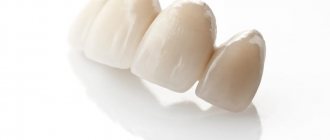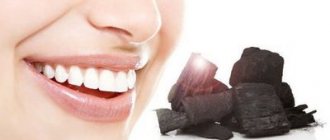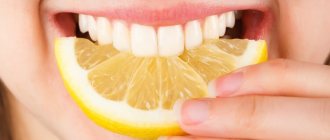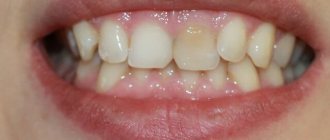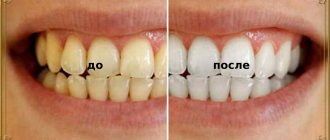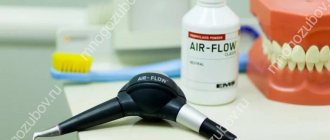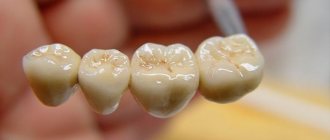Modern dental prosthetics in Minsk is one of the most popular dental procedures. Loss of teeth and, as a result, malocclusion, the development of serious diseases of the oral cavity and the whole body are quite common. But if a couple of centuries ago there was no fight against this, today doctors are already offering a number of technologies for restoring the dentition.
Metal-ceramic dental are durable, easy to use and reliable, and they also look like real teeth. That is why many patients prefer to restore their teeth using metal-ceramic prosthetics. But in order to maintain the natural appearance of the crowns, it is necessary to properly care for them. The Family Dentistry Medical Center offers you to familiarize yourself with the list of basic recommendations for caring for metal-ceramic teeth.
Maintaining good oral hygiene
Artificial teeth, just like real teeth, need regular brushing in the morning and evening, and after each meal. If it is not possible to brush your teeth at one time or another, simply rinse your mouth with clean water and use a irrigator. Dentures should be cleaned vertically from the gums to the edges of the teeth. For these purposes, a regular toothbrush, or even one with soft bristles, is suitable, but it is better to consult your doctor about toothpaste. It is also advisable to use mouthwash and dental floss to thoroughly clean the spaces between your teeth. But in addition to home care, you should not refuse professional services: dental cleaning, removal of accumulated plaque and tartar. It is recommended to visit the dentist 2 times a year.
Reasons for discoloration of prosthetic structures
Immediately after installation, dentures look attractive, but over time their aesthetics often decrease. The reason for this may be poor quality materials. If acrylic or nylon with an insufficiently dense structure are used for manufacturing, then dyes easily penetrate into the existing micropores. And then, with each use of colored products, the aesthetic characteristics of the prosthesis decrease: its surfaces darken and lose their shine.
But even high-quality structures can gradually change their color. Reasons for this:
- Incorrect use of the prosthesis. In particular, you should not immediately eat cold foods after hot foods.
- Insufficient care. The structure cannot be cleaned with abrasive powders. You should also not neglect hygiene procedures. Poor cleaning contributes to the formation of a bacterial film on artificial teeth and gums.
- Violation of the composition of microflora in the oral cavity. It is bad if the balance shifts in favor of pathogenic microorganisms. In this case, the prosthesis can quickly become covered with a dark coating produced by certain types of bacteria.
Rejection of bad habits
Smoking negatively affects the health of our body, but primarily affects our teeth. As a result, artificial crowns gradually begin to accumulate plaque and change their shade. A similar reaction is caused by excessive consumption of coffee, tea and drinks containing dyes, so you should monitor not only oral hygiene, but also daily habits, especially for those who like to use their teeth for other purposes (opening bottles, chewing off hard objects, etc.). d.).
Is it possible to whiten metal-ceramic crowns?
Unfortunately, it is impossible to achieve perfect whitening of fillings and metal-ceramic crowns. So, for example, modern dental ceramics is a fairly dense and hard material, so the brightening compounds used today have practically no effect on it.
The photo shows a metal-ceramic crown
But if the restored areas and prosthetic structures are located in the posterior parts of the jaw, the front teeth can be whitened. Then the difference in shades will not be noticeable. Otherwise, it will not be possible to achieve uniform whitening and an aesthetically pleasing smile. To do this, you will have to look for other solutions to the problem.
Nutritional Features
Too cold or hot food damages tooth enamel, especially if consumed at the same time (for example: hot tea and cold jam). Metal-ceramic dental crowns are also susceptible to heat and can crack, break, or suffer a variety of other damages that require immediate replacement. You should not indulge in solid foods, for example: nuts, candies, etc.
Our teeth, whether natural or artificial, are in dire need of daily and competent care. Do not forget to follow the recommendations of your doctor, and also monitor the health of your teeth: have your teeth treated under anesthesia and do not let oral diseases ruin your life. Modern dentistry in Minsk offers treatment without fear and pain, or more precisely, treatment in your sleep. Specialists at the Family Dentistry Center use drug sedation for these purposes. While the patient is sleeping peacefully, the doctor can carry out all the necessary procedures without causing discomfort or pain. It is convenient and safe for both adult patients and children.
With proper care, high-quality cermet dentures can last more than 15 years. This is not only profitable from a financial point of view, but also practical. Monitor the health of your teeth and promptly seek help or advice from your doctor. Remember, the health and beauty of your smile depends only on you!
Installation of veneers and lumineers
As mentioned earlier, ceramic and plastic crowns are practically not amenable to any of the modern methods of whitening; they can only be cleaned of dirt accumulated on the surface. That is why many patients prefer using more advanced methods of dental restoration, for example, installing veneers.
Veneers are invisible overlays on the frontal area of the teeth, which are fixed using a special dental glue. With their help, you can easily disguise small chips, cracks, darkening of the enamel, as well as slight curvature and even gaps between teeth. These linings are made from very durable and resistant to external influences materials.
An even more reliable and aesthetically attractive option is lumineers. These are exactly the same pads, but thinner. Thanks to this, pre-grinding of the units is not required. Each of these prosthetic options involves taking impressions of the jaw, on the basis of which the onlays themselves are subsequently made. Quite often, doctors prefer to install veneers directly, that is, using a composite material and directly in the patient’s mouth.
Can dentures be whitened?
Can ceramic teeth be whitened? Imagine ordinary dishes made of ceramics and glass - these compositions are inert to chemical bleaches, peroxide, vinegar and other acids, and alkalis. After all, even in laboratories, aggressive chemicals are stored in such containers - and the shade of their walls does not change.
Thus, ceramic veneers, crowns, restoration inlays, and bridges cannot be whitened using chemical methods. Or just lighten the surface darkening a little - and then while it is “fresh”. Those. until the dyes and plaque have eaten into the microscopic pores and cracks on the surface of the ceramic. Abrasive pastes will also only remove surface deposits, and can only harm the prosthesis itself - if solid particles scratch the top coating, it will lose its aesthetics even faster.
How to restore the aesthetics of artificial teeth?
It is possible to return the prosthesis to its original color only if the situation is not advanced. To do this, the structure can be thoroughly cleaned with orthopedic paste. Or soak it in a special solution, with which you can independently whiten dentures, or rather lighten them. The most effective are solutions for the preparation of which whitening tablets with active substances are used. You can also lighten artificial teeth using ultrasonic baths, which help break down hard stone and pigments.
If the dentures are covered with a lot of hard deposits or are highly pigmented, home treatments will not help. In this case, you need to contact an orthopedic dentist.
When to see a doctor
It is necessary to visit a doctor for preventive purposes every six months. This rule applies not only to those who have crowns, but also to all other patients. If there are restorations with crowns in the row. You should have your teeth professionally cleaned by a hygienist every year. This will keep the structures clean, extend their service life and avoid the appearance of an unpleasant odor. During a preventive examination, a specialist will be able to identify disorders that have not yet made themselves known to the patient. An unscheduled visit is necessary in the following cases:
- The crown became movable.
- An unpleasant odor appeared. There is redness of the gums.
- It is painful to bite into a restored tooth.
- Discomfort or any unpleasant sensations appeared.
A timely visit will allow you to promptly identify and eliminate the cause of discomfort, avoiding complications.
Author:
Mayorov Andrey Mikhailovich
Specialization:
orthopedic dentistry, dental prosthetics, implant installation
How to protect yourself from problems with dentures
In order for new teeth to maintain an attractive appearance for a long time and not cause other problems, you must initially carefully approach the choice of a clinic and an orthopedic dentist. It is advisable if dentistry has its own dental laboratory, where modern and high-quality ceramic materials are used. For example, ceramics, glass ceramics, fluorapatite, zirconium dioxide from Ivoclar Vivadent (IPS E.Max), Prettau, Kuraray Noritake, VITA Zahnfabrik. And the specialists were trained by material manufacturers, i.e. know how to handle them correctly.
Another important step is that before prosthetics, professional cleaning with ultrasound and Air-Flo is required, and sometimes professional whitening. After all, if your enamel is covered with plaque, then it looks darker than its natural shade - that is, the prosthesis will be made the same color. And then the patient wants to whiten his teeth or even just have his teeth professionally cleaned - as a result, the crown or veneer will turn out to be darker than the rest of the row. Therefore, do not neglect professional cleaning BEFORE prosthetics - a good dentist himself will offer to undergo it, because... understands all the risks.
Whitening a pulpless tooth
Another obstacle to a perfectly white smile will be a pulpless tooth. Such teeth are essentially dead - during the treatment of pulpitis, the nerve is removed from them, and they are deprived of natural blood supply. Since nutrients also do not reach such teeth, dentin darkens over time - this is a natural process, and “dead” teeth, by definition, look darker than others.
Such teeth will also stand out from the general bleached row, unless intra-canal bleaching is performed. With this chemical whitening procedure, the reagent responsible for lightening the tooth will be applied not only outside, but also inside, into the cavity left after pulp removal. In this case, the filling that covered the tooth is removed, a temporary filling is placed during the course of procedures, and only after all whitening is completed, a new one is selected - a more suitable shade.
However, intracanal bleaching (as, in fact, chemical bleaching in general) is contraindicated in cases where:
- the patient has caries, pulpitis or periodontitis;
- the patient is allergic to hydrogen peroxide or has too sensitive enamel;
- The patient's age does not exceed 16 years.
It is important to know: intra-canal whitening cannot be performed on one tooth more than 3-4 times! When bleaching, the enamel is in any case subjected to serious chemical attack, and since the “dead” tooth is already weakened and is not restored by new nutrients, it can become too fragile and collapse.
What methods of whitening are there in dentistry?
Before we figure out how to whiten ceramic[1] teeth, let’s first look at what whitening methods exist. So, the methods by which you can whiten living enamel are essentially of two types:
- abrasive (mechanical): small and hard particles of the whitening agent scrape off plaque and pigmentation from the surface of the teeth. The clinic uses the Air-Flow hardware method for this, when a mixture of air, drops of water and fine powder is applied to the patient’s teeth under pressure. At home, pastes with a high abrasiveness index (RDA more than 100) are used. It is impossible to whiten stubborn stains, just as it is impossible to make teeth lighter than their natural shade,
- chemical: it whitens the enamel from the outside and a little from the inside - it depends on how deeply the bleaching agent penetrates. The whitening gel contains hydrogen peroxide and/or carbamide peroxide. Using this technique, you can lighten your teeth by 8-12 shades in a clinic and by 2-3 shades at home.
The chemical technique, in turn, can be supplemented by activating the whitening gel with a special lamp - LED, ultraviolet, laser. These are the most effective methods, because... they provide 10-12 shades of whitening.
Other whitening techniques using restorations
- Veneers
are overlays made of ceramic, porcelain or composite materials up to 1.5 millimeters thick that replace the outer layer of teeth. Unlike lumineers, they allow you to change the shape of your teeth, hide chipped enamel and even correct minor bite defects, but require preliminary grinding of the enamel. - Ultraneers
are medium-thick plates (thinner than veneers, but thicker than lumineers) up to 0.5 millimeters. Used to restore aesthetics and correct enamel defects. Unlike lumineers, which are placed on at least 8 teeth in a row, they are suitable for local elimination of defects. - Componeers
are a new class of plates that are made from a nanohybrid composite. This restoration method provides high aesthetics and durability, but also requires preliminary grinding of the enamel.
